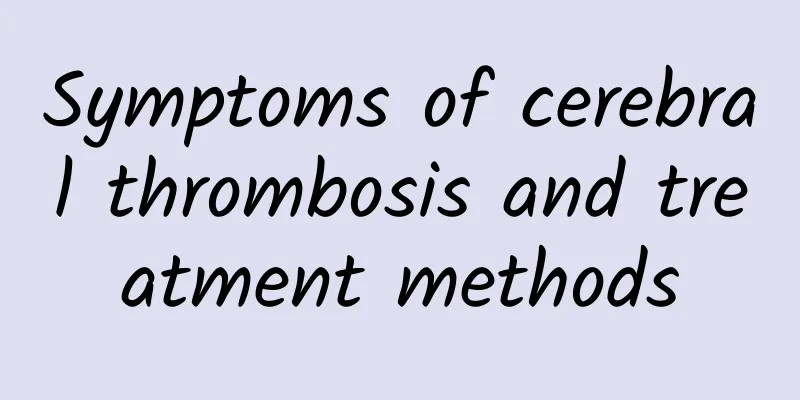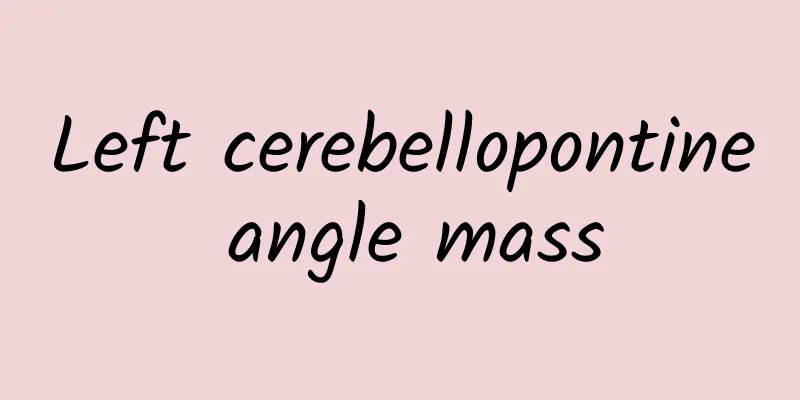Symptoms of cerebral thrombosis and treatment methods

|
Cerebral thrombosis is a common clinical disease. Generally speaking, after people find out that they have cerebral thrombosis, they need to treat the disease as soon as possible. So, what are the symptoms of cerebral thrombosis? How to treat it? Clinical manifestations of cerebral thrombosis: Cerebral thrombosis often occurs during rest or sleep. Some cases have prodromal symptoms of transient ischemic attack (TIA) such as limb numbness and weakness, sudden onset of numbness and weakness of the upper and lower limbs, facial paralysis, slurred speech, etc. Treatment of cerebral thrombosis: 1. Medication Principles of acute drug treatment. (1) Ultra-early treatment should first raise the public's awareness of stroke emergencies and first aid and make them understand the importance and necessity of ultra-early treatment. See a doctor immediately after the onset of the disease. If there are no contraindications, try to provide thrombolytic therapy within the 3-6 hour treatment window, reduce brain metabolism, control brain edema, protect brain cells, and save the ischemic penumbra. (2) Individualized treatment: The most appropriate treatment should be taken according to the patient's age, ischemic stroke type, severity of the disease, and underlying diseases; (3) Prevent and treat complications such as infection, cerebrocardiac syndrome, hypothalamic injury, post-stroke anxiety or depression, syndrome of inappropriate antidiuretic hormone secretion, and multiple organ failure; (4) Holistic treatment includes supportive therapy, symptomatic treatment and early rehabilitation treatment; timely preventive intervention is taken for stroke risk factors such as hypertension, diabetes and heart disease to reduce the recurrence rate and lower the disability rate. 2. Surgical treatment For patients with large supratentorial cerebral infarction with severe cerebral edema, space-occupying effect, and signs of brain herniation, decompressive craniotomy can be performed. For patients whose condition worsens due to cerebellar infarction and brain stem compression, aspiration of the infarcted cerebellar tissue and posterior cranial fossa decompression can be saved. 3. Rehabilitation It should be carried out early and follow the principle of individualization to formulate short-term and long-term treatment plans, select treatment methods in stages and according to local conditions, provide patients with targeted physical and skill training to reduce the disability rate, promote neurological function recovery, improve quality of life and reintegrate into society. |
<<: How to treat premature ejaculation due to kidney deficiency? Five methods are most effective
>>: What foods are good for kidney deficiency caused by masturbation
Recommend
Is Aristolochia poisonous?
Thousands of words can be summed up in one senten...
What are the benefits of soaking your feet in dried mugwort leaves?
Mugwort has been widely used among our people sin...
What to eat for mild cerebral infarction
Mild cerebral infarction is a disease caused by c...
Throat pain and swallowing pain
People always say that drinking water will get st...
Metronidazole liquid effects and efficacy
Metronidazole liquid is a drug that can fight ana...
I feel older after getting a face lift injection
For many people who love beauty, it is common to ...
Is herpes contagious? How to treat it?
In general, when people discover that they have h...
What are the typical symptoms of nasal polyps?
Nasal polyps are a common disease that occurs in ...
Anti-double-stranded DNA antibody negative
Anti-double-stranded DNA antibody is a type of an...
What are the effects and functions of duckweed?
You can pay more attention to and learn more abou...
There is a hard lump on the sole of the foot
Our feet interact with each other every day, so i...
Why do I often have a half headache?
There is an essential difference between half a h...
Drugs for treating scar hyperplasia
We all know that there are some people in life wh...
Medicinal value of dandelion
Dandelion is a relatively common plant. This plan...
What are the treatments for red nose?
Nowadays, many people often encounter red nose. A...









